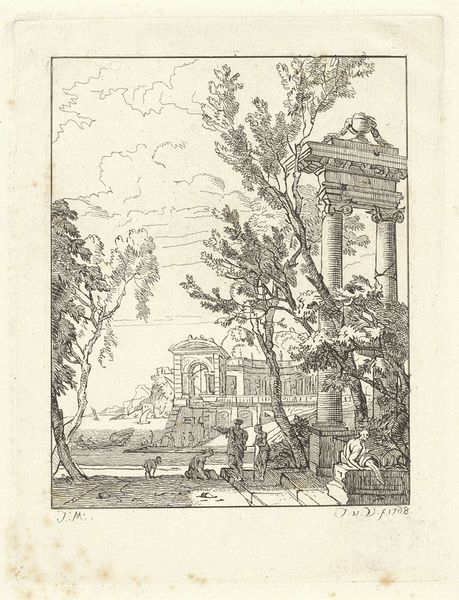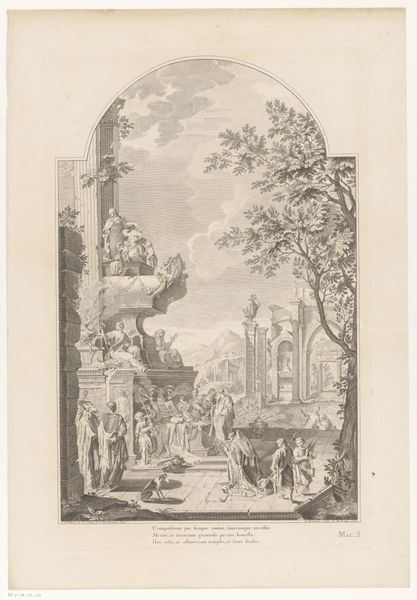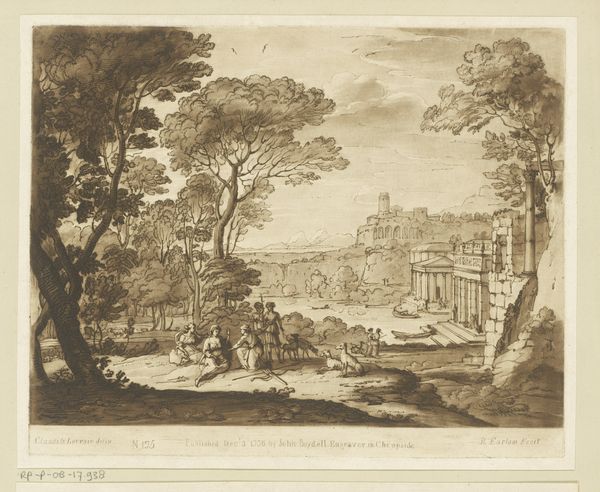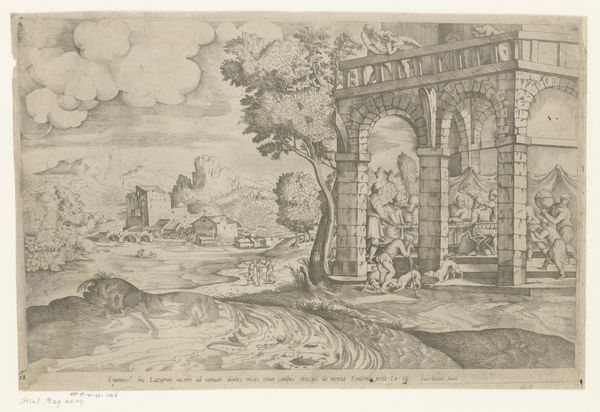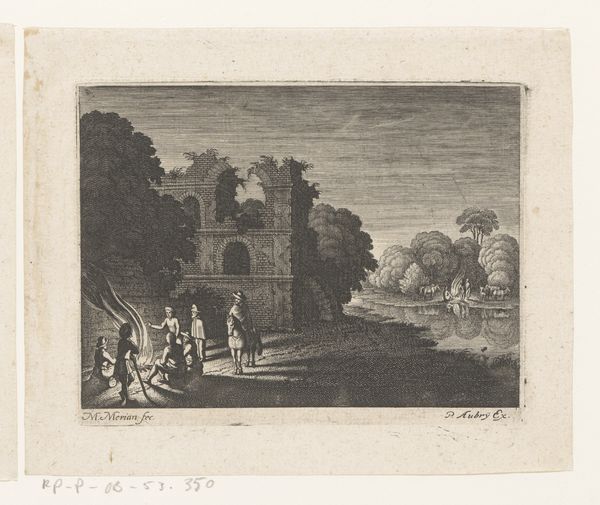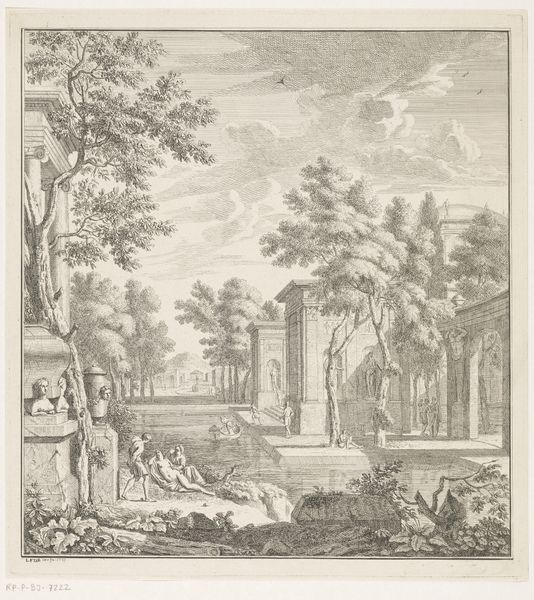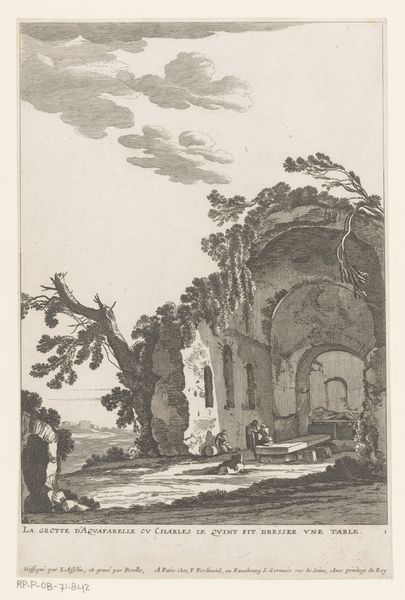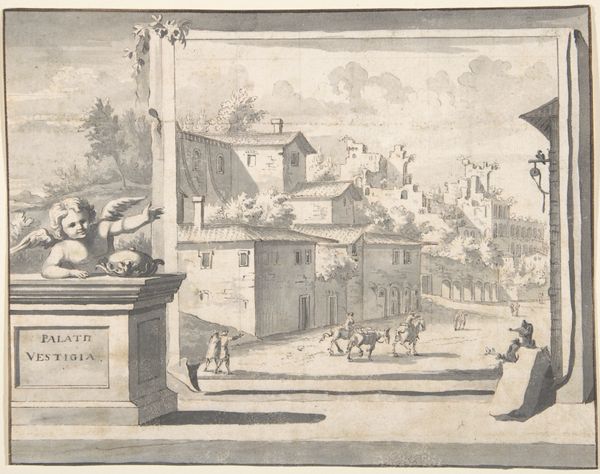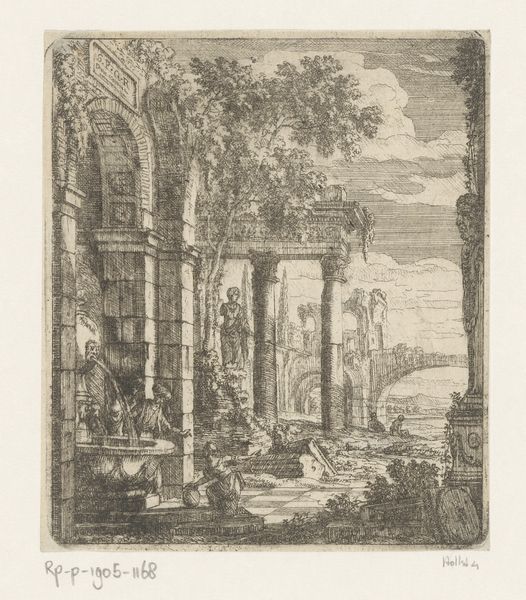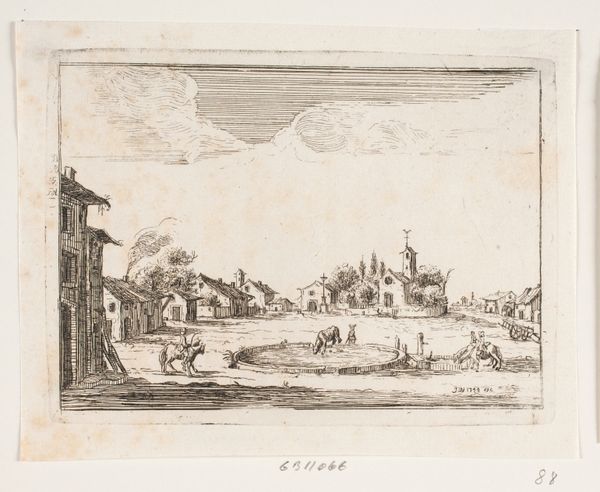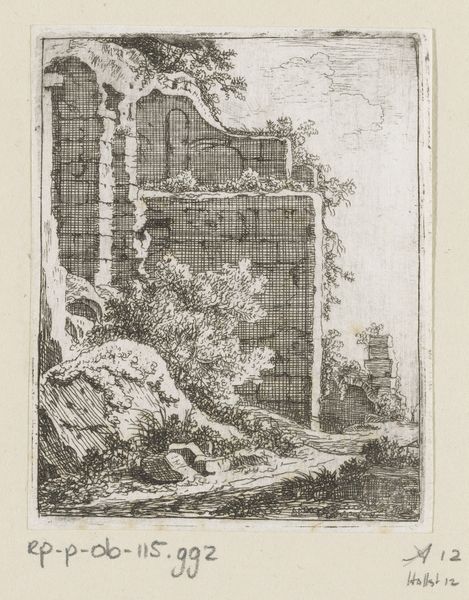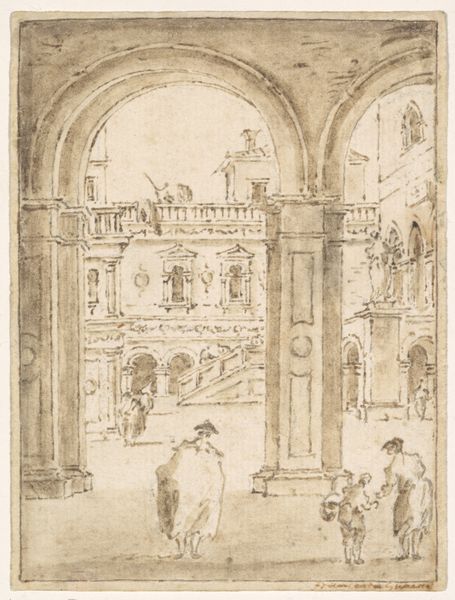
Landschap met ruïnes en vrouwen die een lichaam in een sarcofaag leggen Possibly 1774 - 1779
0:00
0:00
richardearlom
Rijksmuseum
etching
#
etching
#
landscape
#
classical-realism
#
etching
#
figuration
#
genre-painting
#
history-painting
Dimensions: height 270 mm, width 190 mm
Copyright: Rijks Museum: Open Domain
Editor: Here we have Richard Earlom’s etching, "Landscape with Ruins and Women Laying a Body in a Sarcophagus," dating back to around 1774-1779. The monochrome palette really evokes a sense of somber antiquity. What symbols or deeper meanings do you glean from this evocative scene? Curator: It’s fascinating how Earlom utilizes classical ruins, isn't it? They're not just picturesque backdrops, but loaded signifiers. Notice the women and the sarcophagus; this speaks to the rituals surrounding death and mourning that were so prevalent in Roman and Greek culture. Editor: So, the ruins aren’t just aesthetic, but also serve to place us within a very specific cultural narrative? Curator: Precisely! The ruins prompt us to consider themes of mortality, the ephemeral nature of civilization, and the cyclical pattern of rise and fall in human history. Look how nature reclaims the space. Consider also the implications of situating this mourning scene amidst crumbling grandeur— what does it suggest about memory? Editor: It's thought-provoking! Does the etching also make some comment about the way classical motifs were being received or re-interpreted in Earlom’s time? Curator: Absolutely, it underscores the continued fascination with the classical world in the 18th century. There's a romantic nostalgia present, but also a clear awareness of loss and change, visible through the etching technique which uses contrasting tones. Editor: I never thought about it that way; the ruins and the funerary rituals— it’s like Earlom is speaking of continuity and loss, all at once! Curator: Indeed, it reminds us that every image carries the weight of history. Editor: It is fascinating to observe the connection between memory, symbol, and history here!
Comments
No comments
Be the first to comment and join the conversation on the ultimate creative platform.
